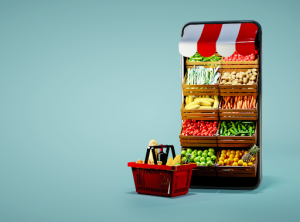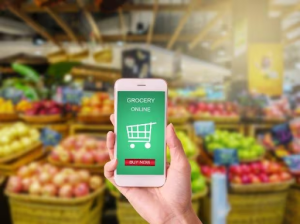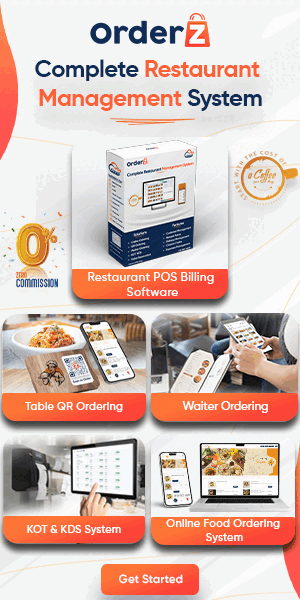Introduction:
As India’s online grocery market is poised to reach a staggering $18 billion by 2024, entrepreneurs are presented with an unprecedented opportunity to tap into this thriving sector. However, with great potential comes great competition. This comprehensive guide serves as your roadmap, providing essential insights and strategic steps to not only enter but thrive in the dynamic world of online grocery retail in India.
Understanding Customer Preferences:
In the fast-paced lives of today’s consumers, convenience is paramount. To meet this demand, focus on efficient ordering processes, swift deliveries, and flexible payment options. Additionally, offering a diverse array of products, competitive prices, and ensuring top-notch quality and freshness are critical elements to capture and retain customer loyalty.
Top Categories under Grocery Stores:
Identifying Key Grocery Categories:
-
Fresh Produce:
Emphasize locally sourced and seasonal fruits, vegetables, dairy, and eggs.
Implement stringent quality control measures and efficient supply chains for freshness.
-
Pantry Essentials:
Cater to varied dietary preferences with a comprehensive selection of grains, spices, cooking oils, and packaged foods.
Provide options at different price points to accommodate diverse consumer budgets.
-
Beverages:
Diversify your offerings with a broad range of beverages, including local favourites and health-conscious options.
Stay attuned to emerging beverage trends and incorporate them into your inventory.
-
Snacks and Convenience Foods:
Address the demands of busy lifestyles with a mix of both healthy and indulgent snack options.
Offer ready-to-eat meals and frozen items to cater to time-strapped consumers.
-
Household and Cleaning Supplies:
Stock a comprehensive range of cleaning essentials and toiletries to meet diverse household needs.
Consider eco-friendly options to appeal to environmentally conscious consumers.
Exploring the Concept of an Online Grocery Store:

Hyperlocal Model:
- Focus on a specific region or city for quicker deliveries and tailored product selections.
- Build strong partnerships with local suppliers for a hyper-personalized customer experience.
Specialty Store:
- Carve out a niche market by catering to specific needs, such as organic, gluten-free, or international products.
- Establish your brand as a go-to destination for specialized grocery requirements.
Marketplace Model:
- Collaborate with local vendors to expand your product range.
- Offer a diverse catalog by featuring products from various sellers, enhancing consumer choices.
Preparing for Your Online Grocery Business:
Identifying Your Target Audience:
Demographics:
- Consider age, income, location, and family size to tailor your offerings.
- Understand the unique needs of your target audience to curate a personalized shopping experience.
Lifestyle:
- Recognize the different needs of working professionals, families, and health-conscious individuals.
- Align your marketing strategies with the lifestyle choices of your target demographic.
Online Behavior:
- Study preferred platforms, shopping habits, and payment preferences to optimize your online presence.
- Utilize data analytics to refine your marketing and product placement strategies.
Registering Your Online Grocery Business:
Obtain Necessary Licenses:
- FSSAI certification for selling food products is mandatory.
- Register your business for GST and comply with other relevant taxes.
- Fulfil local licensing requirements, adhering to the Shop and Establishment Act.
Starting Your Online Grocery Store with OrderZ:

User-Friendly Platform:
- Leverage OrderZ for its user-friendly interface catering to both beginners and seasoned entrepreneurs.
- Customize your online store to align with your brand identity and target audience.
E-commerce Features:
- Efficiently manage product listings, order processing, inventory, and customer relationships within the platform.
- Utilize the platform’s features to streamline operations and enhance the customer experience.
Payment Gateways:
- Integrate secure payment options, including cash on delivery, to accommodate diverse consumer preferences.
- Ensure seamless and secure transactions to build trust among your customers.
Delivery Management:
- Utilize OrderZ’s delivery management features to offer flexible options such as same-day, next-day, and scheduled deliveries.
- Implement a robust tracking system to keep customers informed about the status of their orders.
Marketing Your Online Grocery Store:

Social Media Marketing:
- Utilize popular platforms like Facebook, Instagram, and WhatsApp to connect with your audience.
- Share engaging content, promotions, and updates to build a loyal online community.
Online Advertising Campaigns:
- Run targeted campaigns on platforms like Google Ads and Facebook Ads to reach specific demographics.
- Optimize your advertising strategies based on consumer behavior and feedback.
Discounts and Loyalty Programs:
- Attract and retain customers with competitive discounts and loyalty programs.
- Encourage repeat business by rewarding loyal customers with exclusive perks.
Influencer Collaborations:
- Partner with local influencers and bloggers to increase brand visibility.
- Leverage influencers to showcase your unique offerings and attract their followers.
Email Marketing:
- Engage with your customer base through email marketing campaigns.
- Share newsletters, promotions, and updates to keep customers informed and involved.
Conclusion:
Launching and sustaining a successful online grocery store in India in 2024 demands a combination of strategic planning, technological integration, and customer-centric practices.
By understanding customer preferences, identifying key grocery categories, exploring different business models, and leveraging platforms like OrderZ, you can navigate the complexities of the online grocery landscape and position your business for success.
Remember, adaptation and continuous improvement are key in this ever-evolving market. Best of luck on your journey to redefine online grocery shopping in India!
5 FAQs about “How to Sell Grocery Online in India 2024: A Guide to Success”
1. What are the biggest challenges for online grocery businesses in India?
The blog mentions competition but you could delve deeper. Highlight challenges like maintaining product freshness, managing logistics for a diverse geography, and dealing with high price sensitivity among customers.
2. How much investment is needed to start an online grocery store?
Provide a general range or breakdown of costs for platform fees, inventory, marketing, and logistics. This will help readers assess their financial feasibility.
3. What are the legal and regulatory requirements for operating an online grocery store in India?
Expand on the mentioned FSSAI and GST registration. Mention any additional permits or compliance needed based on product categories or location.
4. What are some successful online grocery store models in India that I can learn from?
Give examples of established players like BigBasket, Grofers, or Zomato Groceries, highlighting their unique selling propositions and target audiences. This could inspire readers with specific niche ideas.
5. How can I ensure my online grocery store stands out in a crowded market?
Suggest specific strategies beyond the general tips mentioned. This could include focusing on hyperlocal deliveries, offering unique product categories, or building a strong loyalty program with personalized recommendations.






